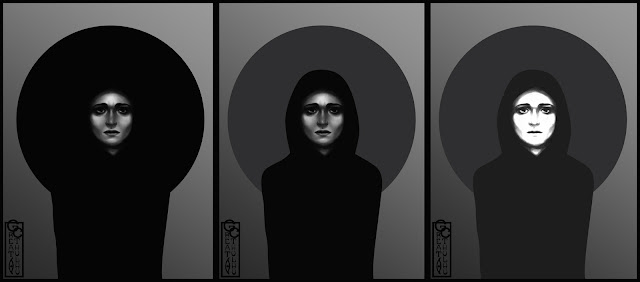Inside Aji, Mitsuharu Tsumura's New Macau Nikkei Restaurant
INSIDE AJI, MITSUHARU TSUMURA'S NEW MACAU NIKKEI RESTAURANT
“It’s like being in Japan and Peru at the same time,” says chef Mitsuharu Tsumura of his new restaurant concept Aji, except I’m not in Japan or Peru, I’m in the brand spanking new MGM hotel in the casino resort of Cotai, Macao – so brand new they’ve barely taken the plastic off. I’m sitting at a table overlooking the vast digital courtyard below me, which is also home to a sweets emporium from chef Janice Wong, while directly opposite me at the same level, but what feels like at least 100 metres away, though it might be closer, is a steak offering from Mauro Colagreco. Just then a pitch perfect pisco sour arrives at my table. Things get decidedly more Peruvian – and Japanese – so let’s say Nikkei, from there.
Nikkei is Tsumura’s thing and his elevated interpretation of this cuisine, which developed from Japanese migration to Peru from the late 19th century onwards, has his Lima restaurant Maido currently sitting atop the Latin America’s 50 Best Restaurants list. Tsumura is on a mission to spread Nikkei around the world, starting with Aji, the first Nikkei restaurant in Macau. “The hotel wanted something that is unknown in China. They think Nikkei is going to one of the big future cuisines and they’re betting on that,” says Tsumura of the phone call three years ago from the MGM top brass, proposing Aji. “I told them what I needed for my kitchen, for my cuisine, and they said, ‘Whatever you need, it’s going to happen.’”
Nikkei cebiche at Aji
While nearby Hong Kong can claim to be the gastronome’s paradise around these parts, there is one distinct advantage to its Macau's location: its proximity to Japan. “We’re able to bring things fresh every day from Japan,” says Tsumura, “bring things from Peru. In Asia I haven’t seen a restaurant that has so many different varieties of pisco. If we have products from Japan and Peru, we have the base, the DNA for making great food.” Aji, meaning “flavour” in Japanese and ‘chili pepper’ in Spanish, a reference to the rumoured entrance point of chilis into Asia through Macau, is, Tsumura says, a totally different concept to his restaurants in Peru and Chile. Indeed there are distinct Chinese touches, such as Peking duck nigiri and suckling pig sushi, alongside a 10-strong menu of Maido signature dishes, such as the famous 50-hour short rib beef, a dark sticky mass of falling apart flavour, and plenty of cebiche of course, including a carretilla packed with Japanese seafood, which dances around the mouth in a beautiful seduction.
Tsumura, who travels to Macau four times a year now, brought two of his top guys from Maido to run Aji: trusted sous chef Aldo Shimabukuro, who's been with him for eight years and specialises in sushi and cebiche, and chef de cuisine Edwin Guzman Navarro – both Peruvian. “Those are two of my strongest chefs in Peru, so I was sure they’d do a great job,” he says. “[The team] is always going to be a mix, we have people from every part of Asia. I think the head chef should always be Peruvian, the sous chef also, but then we have people from Malaysia, from France, from Mainland China, from Portugal. The kitchen is a melting pot.”
Much like the cuisine.
20,000 NIGIRI UNDER THE SEA
Back in Lima (we actually meet kind of halfway, distance wise, in Warsaw, Poland, where Tsumura is speaking at a Lexus Hybrid Cuisine event alongside six other of the world’s best chefs), Tsumura and his team are continuing their investigations in the ocean, alongside scientist Angel Pereira from IMARPE, the government body tasked with studying Peru’s patch of the Pacific. They’re seeking new abundant species that have yet to be commercialised – “they’re already mapped, we just need people to go out and fish them!” says Tsumura – to put on the menu. One such creature the chef is particularly excited about is the argonaut, a tiny octopus that can fit into the palm of your hand, which is delicious, both crispy with an emulsion, or raw, he says. They’re also conducting thorough research into the absolute best time to eat sea urchin in Peru, to get the creamiest, most buttery uni, as well as the numerous possibilities of fish offal. “We’re developing a whole new gamma of dishes from the interiors of the fish,” says Tsumura. “But being edible doesn’t mean it’s tasty. We try to do both … we have a lot of failures trying, but if it doesn’t work, we just don’t do it any more. We ended up realising, for example, what we call the brain of the octopus, where the reproductory organ is, the roe, which is in the brain of the octopus, it’s actually very, very nice. It has a lot of fat; it’s like having a monkfish liver – that kind of texture. You can make crackers with it. That was really surprising.”
SOY STORY
On dry land, Tsumura and his team are involved with two main initiatives currently, outside of the daily running of the restaurants: firstly, a scholarship to stage at Maido, which is offered to three students per year from a local school teaching culinary arts, and second, they lend their expertise to the Pan-Soyproject, which is helping people from low income backgrounds, largely women, to become gastronomic entrepreneurs though a series of micro-enterprises across Peru that utilise Peruvian soy. Some of the women have street food stands, some restaurants, and Tsumura and his team is on hand to offer guidance and have even featured the products as part of their degustation menus. “We really like to help people,” says the ever-positive chef. “They’re doing really well, it’s a profitable business!”
http://bit.ly/2GuVItE


Comments
Post a Comment